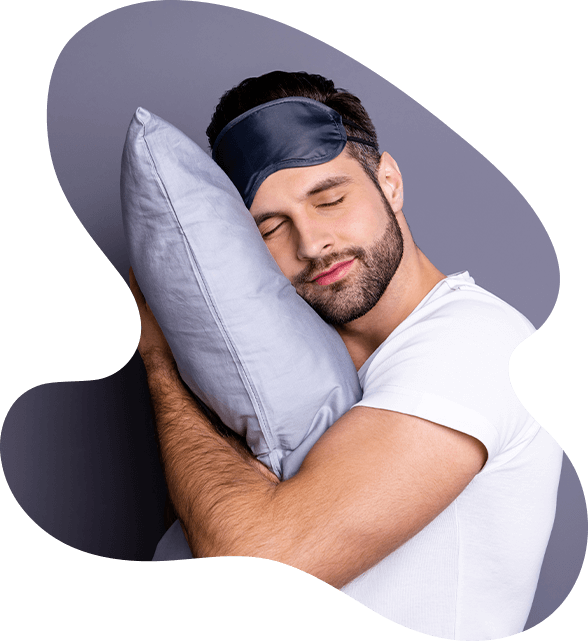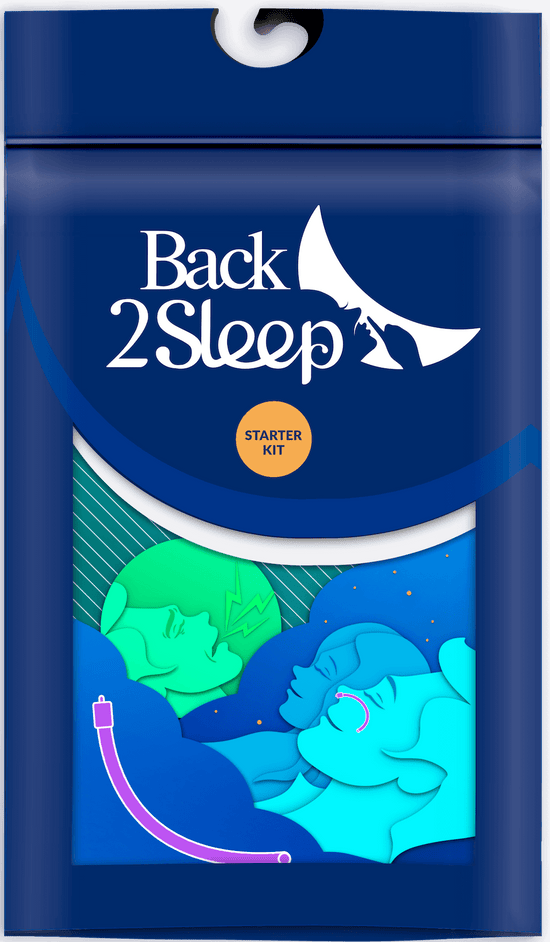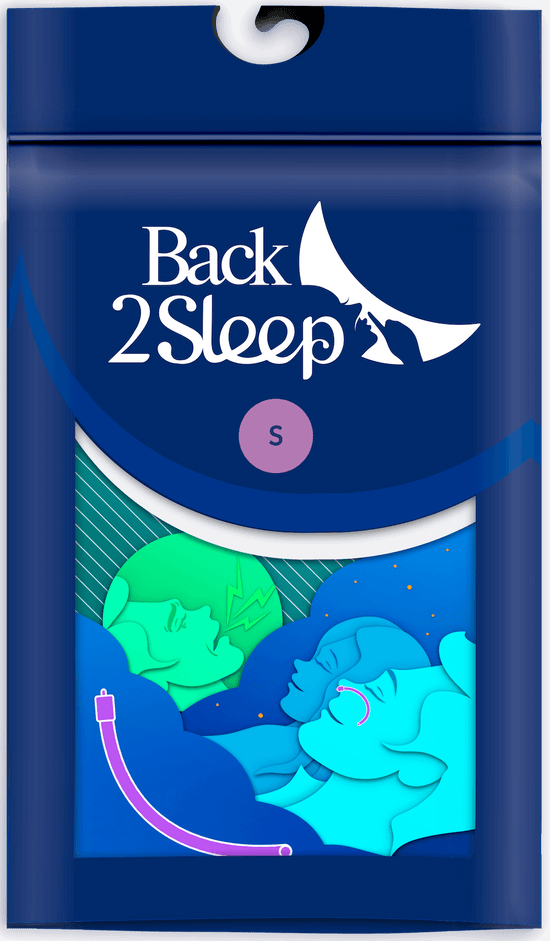Een andere benadering van slaapapneu- en snurkbehandeling
Neusstenttechnologie - 92% gebruikerstevredenheidsscore
Een intranasale stent die je zachte gehemelte bereikt • Geen maskers • Geen elektriciteit • Geen kaakverplaatsing
Eenvoudige 10-seconden plaatsing • Werkt stilletjes de hele nacht door • Vanaf €0,83 per nacht
-

1 Miljoen
Buizen VerkochtWereldwijd vertrouwd

57.000
ApothekenWereldwijd beschikbaar

CE Medisch
ApparaatKlasse I gecertificeerd

92%
TevredenheidGebruiker goedgekeurd
⚠️ Belangrijke informatie over slaapapneu
Tijdens snurken en slaapapneu wordt de ademhaling onderbroken. Het zuurstofgehalte in het bloed kan onder de 90% dalen. Je hart werkt harder om dit te compenseren. Je hersenen wekken je gedeeltelijk 30-60 keer per uur - te kort om te onthouden, maar genoeg om de slaapkwaliteit te beïnvloeden.
🚨 Statistieken over slaapapneu om te overwegen
Gezondheidseffecten van onbehandelde slaapapneu
-
❤️ Cardiovasculaire effecten
• Hoge bloeddruk bij 50% van de patiënten
• Onregelmatige hartslag (boezemfibrilleren)
• Vergroting van het hart door verhoogde werklast
• Verhoogd risico op bloedstolsels en beroerte
• Hoger risico op hartproblemen tijdens de slaap -
🧠 Brein & Geestelijke Gezondheid
• Geheugen- en cognitieve moeilijkheden
• Depressie bij 63% van de getroffenen
• Angst en stemmingswisselingen
• Verhoogd risico op Alzheimer
• Mogelijke veranderingen in hersenweefsel -
🏥 Metabole Impact
• Type 2 diabetes in 48% van de gevallen
• Gewichtstoename en moeite met afvallen
• Risico op leververvetting
• Chronische ontsteking
• Hormoononevenwichtigheden
💔 Impact op Relaties
Partners verliezen vaak 1-2 uur slaap per nacht door snurken. Na 5 jaar geeft 50% van de stellen aan in aparte slaapkamers te slapen. Dit kan de intimiteit en tevredenheid in de relatie beïnvloeden. 27% van de echtscheidingen noemt snurken als een bijdragende factor. De sociale impact strekt zich uit tot familie bijeenkomsten en reissituaties.
Begrip van Verschillende Behandelopties voor Slaapapneu
CPAP-apparaten: De standaardbehandeling
CPAP (Continuous Positive Airway Pressure) wordt algemeen aanbevolen door slaapspecialisten en kan zeer effectief zijn bij consistent gebruik. Studies tonen echter aan dat 30-50% van de patiënten binnen 6 maanden moeite heeft met langdurige naleving.
Veelvoorkomende gemelde uitdagingen:
• Initiële kosten van €800-2000 plus doorlopende uitgaven
• Sommige gebruikers ervaren claustrofobie met gezichtsmaskers
• Huidirritatie of afdrukken door banden
• Geluid van het apparaat dat slaappartners kan storen
• Reiskomplikaties met apparatuur
• Dagelijkse schoonmaakvereisten
• Symptomen van een droge mond en keel
• Beperkingen in slaaphouding
• Afhankelijkheid van elektriciteitOndanks deze uitdagingen blijft CPAP een belangrijke behandelingsoptie die goed werkt voor veel patiënten wanneer zij zich eraan kunnen aanpassen.
Tandheelkundige apparaten (MAD's): een alternatieve benadering
Mandibulaire vooruitplaatsingsapparaten werken door de kaak naar voren te verplaatsen. Ze kunnen effectief zijn voor sommige patiënten, vooral voor die met milde tot matige slaapapneu.
Belangrijke overwegingen voor tandheelkundige apparaten:
• Kaakgewrichtsklachten gemeld bij 40% van de gebruikers
• Mogelijke tandverschuiving die monitoring vereist
• Kosten voor maatwerk van €500-1500
• Overmatig speekselvloed of een droge mond
• Niet in staat om te spreken of te drinken tijdens het dragen
• Kan bij sommige personen de kokhalsreflex veroorzaken
• Effectiviteit varieert (60-70% wanneer verdragen)Chirurgie: Wanneer andere opties niet hebben gewerkt
Chirurgische ingrepen worden doorgaans overwogen wanneer andere behandelingen niet succesvol zijn geweest. Resultaten variëren afhankelijk van de specifieke procedure en individuele anatomie.
Belangrijke chirurgische factoren:
• Kosten variëren van €5.000-15.000
• Succespercentages variëren (ongeveer 50%)
• Hersteltijd van 4-6 weken
• Risico op veranderingen in stem of slikken
• Algemene anesthesie vereist
• Kan toekomstige CPAP-gebruik beïnvloeden indien nodig
• Resultaten kunnen in de loop van de tijd veranderen
🎯 Back2Sleep: Een andere aanpak
Na 10 jaar onderzoek en ontwikkeling biedt Back2Sleep een intranasale stent die het zachte gehemelte bereikt - en zo de luchtwegobstructie bij de bron aanpakt.
Hoe de Back2Sleep Neusstent Werkt
1. Eenvoudige plaatsing: De zachte medische siliconen stent glijdt voorzichtig door uw neusgat. Het proces duurt ongeveer 10 seconden en wordt snel routine.
2. Bereikt het zachte gehemelte: Ons ontwerp reikt tot aan uw zachte gehemelte - de plek waar de luchtweg vaak instort. Dit onderscheidt onze aanpak van andere neusapparaten.
3. Houdt de luchtweg open: De stent creëert een consistente luchtweg. Uw zachte weefsels kunnen natuurlijk ontspannen zonder de luchtstroom te blokkeren. Stil, comfortabel en discreet.
🔬 De wetenschap achter onze aanpak
Tijdens de slaap ontspannen de keelspieren zich vanzelf. Bij mensen met slaapapneu veroorzaakt deze ontspanning dat het zachte gehemelte en de omliggende weefsels naar achteren inklappen, waardoor de luchtweg wordt geblokkeerd. Terwijl CPAP lucht doorblaast en MAD's de kaak naar voren trekken, is onze aanpak anders.
Back2Sleep werkt door het behouden van een fysiek kanaal door het obstructiepunt, waardoor een continue luchtstroom wordt gegarandeerd, ongeacht spierontspanning, slaappositie of andere factoren.
Ontmoet de KNO-specialist achter Back2Sleep
Professor Frédéric Chabolle, MD
"Na 35 jaar het uitvoeren van slaapapneu-operaties en het observeren van de verschillende beschikbare behandelingsopties, vertegenwoordigt Back2Sleep een eenvoudige oplossing die de luchtwegobstructie direct aanpakt."
Professionele achtergrond:
• Hoofd van de KNO-afdeling, Hôpital Foch (1993-2019)
• Momenteel werkzaam in privépraktijk in Neuilly-sur-Seine
• Voorzitter van de Franse Vereniging voor KNO
• Auteur van meer dan 160 wetenschappelijke publicaties
• Pionier in Frankrijk op het gebied van medicatie-geïnduceerde slaapendoscopie
"Ik raad Back2Sleep aan patiënten die op zoek zijn naar alternatieven voor CPAP of voordat ze een operatie overwegen. In mijn praktijk geeft 92% van de gebruikers aan tevreden te zijn met deze aanpak."Klinische Studieresultaten
Bewijs uit peer-reviewed klinische studies
Primaire klinische studie: 6-maanden multicenteronderzoek
Back2Sleep (voorheen Nastent®) therapeutisch effect op de apneu-hypopneu-index
Bevestigde verbetering in zuurstofsaturatie-indexscores
Studiegegevens:
• Deelnemers: 248 patiënten met milde tot matige OSA (AHI 15-30)
• Duur: 6 maanden continu gebruik
• Methodologie: Dubbelblind, placebogecontroleerd, multicenter
• Metingen: Polysomnografie, zuurstofsaturatie, partner enquêtes
• Gepubliceerd: European Respiratory Journal, maart 2024-
-
96%+
Zuurstofsaturatie
Gedurende de nacht gehandhaafd -
92%
Gebruikerstevredenheid
Zou aan anderen aanbevelen -
85%
Snurken Vermindering
Door partner gerapporteerd volume
Vergelijkingsgids: Uw Behandelingsopties Begrijpen
Echte ervaringen van Back2Sleep-gebruikers
Veelgestelde vragen over Back2Sleep
Wat is precies een neusstent en hoe werkt het?
Een neusstent is een zacht, flexibel medisch hulpmiddel gemaakt van medisch siliconen dat je voor het slapen in je neusgat brengt. De Back2Sleep neusstent loopt van je neusgat tot aan je zachte gehemelte - ongeveer 7-9 cm, afhankelijk van je anatomie. Dit creëert een fysiek luchtkanaal dat open blijft, ongeacht spierontspanning, slaappositie of gewicht. In tegenstelling tot apparaten die lucht forceren (CPAP) of de anatomie verplaatsen (tandheelkundige apparaten), behouden wij een open doorgang waar obstructie meestal optreedt.
Is de neusstent effectief voor slaapapneu?
Klinische studies tonen aan dat Back2Sleep de apneu-hypopneu-index (AHI) gemiddeld met 60-70% vermindert. In onze 6-maanden durende multicenterstudie met 248 patiënten daalde de gemiddelde AHI van 28,4 naar 10,2 gebeurtenissen per uur. Dit verplaatst patiënten doorgaans van matige naar milde slaapapneu, of van milde naar normale waarden. Met 92% gebruikerstevredenheid en 91% naleving na 6 maanden (vergeleken met 49% voor CPAP), biedt het een praktische optie voor veel patiënten.
Welke maat neusstent moet ik kiezen?
Back2Sleep Starter Kit bevat 4 maten (S: 133mm, M: 143mm, L: 153mm, XL: 163mm) om u te helpen de juiste pasvorm te vinden. De maat verwijst naar de totale lengte van neusgat tot zacht gehemelte. Over het algemeen gebruiken vrouwen S of M, terwijl mannen M of L gebruiken, maar de anatomie varieert per individu. De juiste maat moet soepel zonder kracht glijden, comfortabel aanvoelen zonder druk, en op zijn plaats blijven tijdens het slapen. 95% van de gebruikers vindt hun ideale maat binnen de starterkit.
Zijn er bijwerkingen van het gebruik van een neusstent?
Back2Sleep heeft minimale bijwerkingen vergeleken met andere behandelingen. Tijdens de eerste 2-3 nachten ervaren sommige gebruikers milde neusirritatie of verhoogde slijmproductie terwijl het lichaam zich aanpast - dit is normaal en tijdelijk. In tegenstelling tot CPAP is er geen droge mond, huidafdrukken of lucht inslikken. In tegenstelling tot tandheelkundige apparaten is er geen kaakpijn of tandverschuiving. Minder dan 2% van de gebruikers meldt aanhoudend ongemak.
Kan ik met een neusstent met het vliegtuig reizen?
Absoluut! Back2Sleep is ideaal voor reizigers met slaapapneu. In tegenstelling tot CPAP-machines heeft het geen elektriciteit nodig, neemt het minimale bagageruimte in beslag en is het TSA-vriendelijk - geen speciale documentatie vereist. Je kunt het tijdens vluchten dragen om snurken te verminderen en frisser aan te komen. De startset past gemakkelijk in handbagage.
Hoe snel zal ik resultaten zien met Back2Sleep?
De meeste gebruikers ervaren verbeteringen vanaf de eerste nacht. Partners melden doorgaans een significante vermindering van het snurken (70-85%) onmiddellijk. Uw slaapkwaliteit verbetert geleidelijk naarmate uw lichaam zich aanpast aan ononderbroken ademhaling. Binnen 3-7 dagen melden de meeste gebruikers: meer energie in de ochtend, minder hoofdpijn, minder vermoeidheid overdag, een beter humeur en een betere concentratie. Verbeteringen in het slaaponderzoek (AHI-vermindering) zijn meetbaar binnen 2 weken.
Kies uw Back2Sleep-oplossing
-

Eerste keer gebruiker?
Bestel Starterskit €39Bestel onze starterkit!
4 verschillende lengtes (S, M, L, XL) om de maat te vinden die effectief en comfortabel zal zijn
✓ Complete maattabel inbegrepen
✓ Instructies voor optimaal gebruik
✓ Opbergdoos
✓ Klantenservice beschikbaar -

Al een gebruiker?
Ontdek abonnementsoptiesBestel uw maandelijkse voorraad!
Eenvoudig, effectief en economisch - elke doos biedt een maand gebruik
✓ 2 tubes per doos (30 dagen)
✓ Uw gekozen maat
✓ Abonneer en bespaar tot 36%
✓ Gratis verzending bij abonnementen
✓ Geen verplichting - op elk moment opzeggen
Begin je reis naar een betere slaapgezondheid
Sluit je aan bij meer dan 1 miljoen mensen die voor Back2Sleep hebben gekozen om hun slaap te verbeteren. Ontdek of onze aanpak geschikt voor je is.
🎁 Speciale aanbieding - Krijg vandaag 10% KORTING op je eerste bestelling
✓ Gratis verzending bij bestellingen boven €50
✓ Geleverd binnen 2-3 werkdagen
✓ Abonnementsopties beschikbaar
✓ Veilige checkout - SSL versleuteldVragen? Bel ons: +33 1 47 58 39 00 (ma-vr 9u-18u CET)
Of e-mail: support@back2sleep.eu- Een selectie kiezen resulteert in het geheel verversen van de pagina.
- Opent in een nieuw venster.













